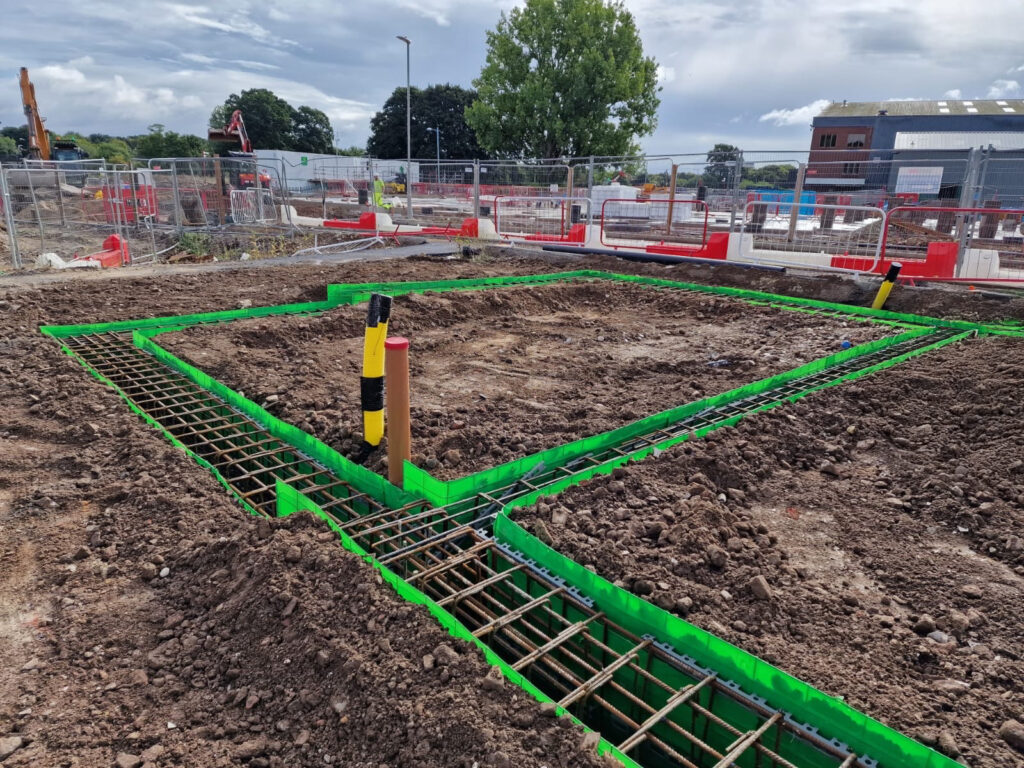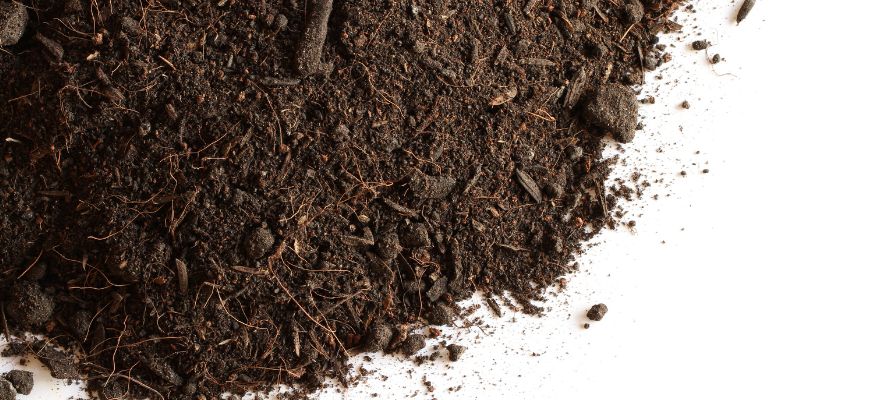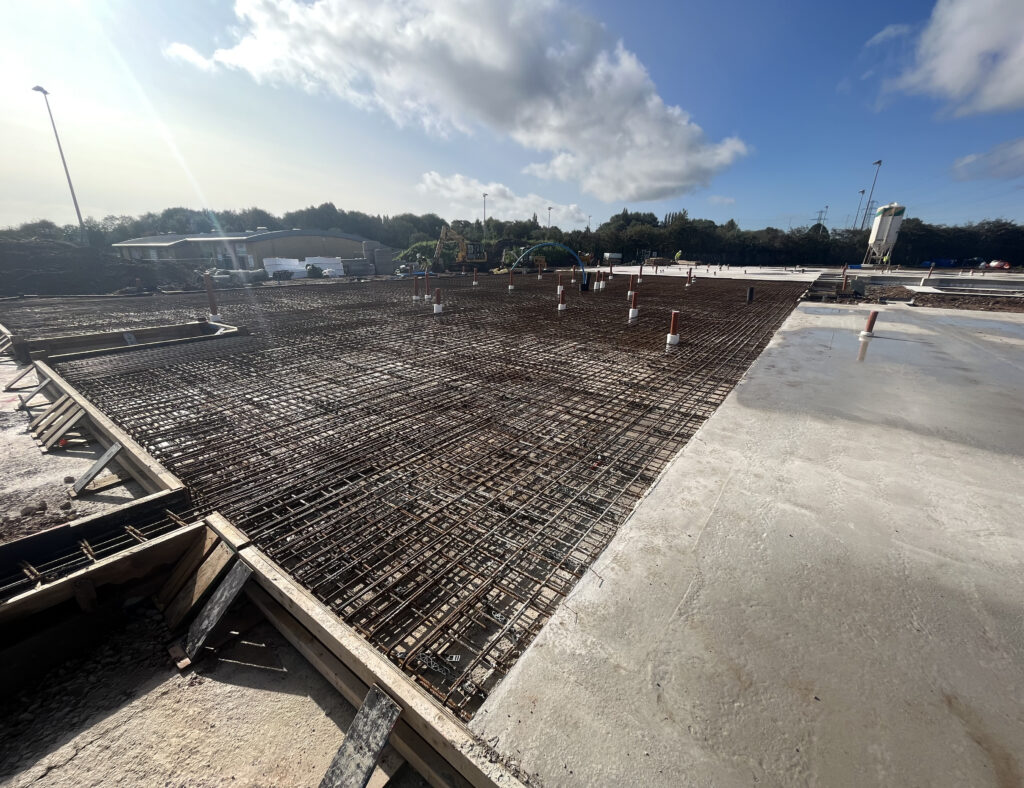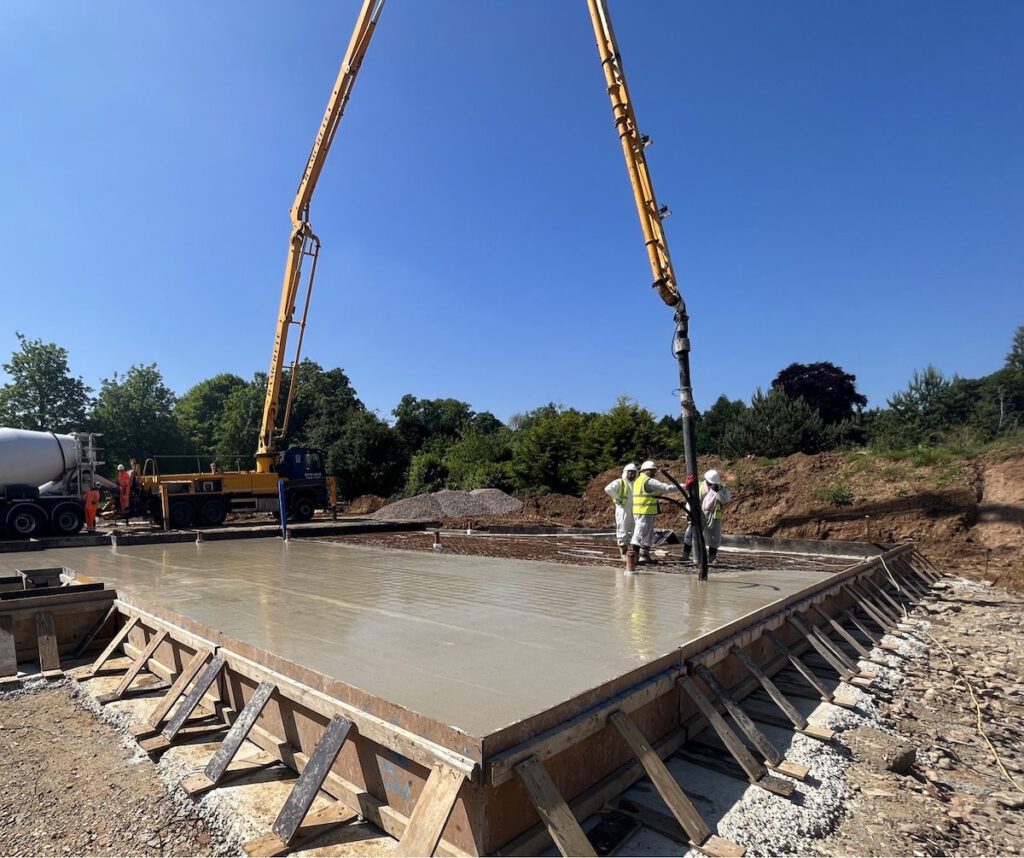Heave is primarily induced by the expansion of clay-rich soils, demanding a nuanced and proactive approach to understand its mechanisms, impacts, and, crucially, the strategies for its mitigation.
Building on our previous discussions about the nature and detection of heave, we now turn our focus to effective solutions, including SPEEDECK’s innovative foundation design, designed to shield homes and infrastructure from the forces exerted by this geological phenomenon.
The Dual Nature of Shrink-Swell Soils
Shrink-swell soils, rich in clay, pose a significant threat to structures through two key processes: heave and subsidence.
Heave occurs when these soils absorb moisture and expand, leading to uneven upward pressure that can distort and crack structural foundations and walls.
Conversely, subsidence happens when these soils dry and contract, causing buildings to settle, and can also result in large cracks along the house walls seen from both inside and outside.
Both scenarios highlight the critical need for vigilant foundation design and maintenance to ensure the integrity and safety of buildings.
First identified by UK geotechnical specialists in 1947, the challenges posed by shrink-swell soils have long been recognised. Over the past decade, their impact on the UK economy has been profound, with an estimated cost of £3 billion.
This staggering figure accounts not only for direct repair expenses but also for broader economic effects, including insurance claims and property devaluation. As the most economically damaging geohazard in the UK, shrink-swell soil behaviour underscores the urgent need for effective mitigation strategies and continuous research in geotechnical engineering.

Cracks in building due to heave
Heave and Subsidence Risk to Lightweight Structures
The risk posed by shrink-swell soils is not uniform across all types of buildings. Lightweight structures, such as low-rise residential buildings, are particularly vulnerable. Lightweight buildings are less capable of suppressing differential movements that can cause heave and subsidence, when compared to heavier, multi-storey structures.
Engineering Strategies for Heave risk Management
Addressing the risk of heave is a crucial aspect of the foundation design process, where this geotechnical challenge has been identified at a construction site. Several engineering strategies can be implemented to mitigate the risks associated with heave, each with its own considerations in terms of effectiveness, cost, and practicality.
Proactive Measures in Foundation Design
Recognising heave as a potential issue during the initial stages of geotechnical site analysis and foundation design is essential. This early detection allows for the integration of specific strategies through site appraisal is tailored to address the unique conditions of the soil.
Early assessment of the risk, discussions with specialist contractors and relevant third parties such as building control and warranty providers will enable the approach to heave to be determined early. This prevents potentially costly delays or unexpected costs to be realised later in the project.
Selection of the most appropriate foundation solution allows heave risks to be addressed in the most time and cost effective manner.
Techniques to Mitigate Heave
Removal and Replacement of Expansive Soils
One approach involves excavating the expansive clay soils and replacing them with non-expansive materials. While this method can be effective in mitigating heave, it is often expensive and time-consuming. The logistical challenges, particularly the depth and extent of soil removal, can also make this approach impractical for some projects.
Since this likely also involves excavation in the zone of tree roots, this may be prevented by ecological constraints.

Replacement of soil at a construction site
Soil Stabilisation Methods
Stabilisation techniques, such as remoulding and mixing the existing soil with non-expansive soils, aim to dilute the shrink-swell potential of the native soil. This method, too, comes with significant cost and time implications and necessitates rigorous quality control to ensure the stability and uniformity of the soil mixture.
Prewetting the Soil
Prewetting is a technique that involves artificially increasing the moisture content of the soil to induce heave before construction. The objective is to stabilise the soil’s volume change potential before building. However, this process can take years to achieve the desired level of wetting and may lead to a reduction in soil strength. Additionally, prewetting does not always address the possibility of water redistribution post-construction, which can reintroduce the risk of heave. This will also not address future desiccation and subsidence.
Each of these techniques offers a way to manage the risk of heave, but they also come with their own set of challenges. The choice of strategy depends on a variety of factors, including the specific conditions of the site, budget constraints, and the projected timeline for the project. As such, a comprehensive understanding of the site’s geotechnical properties is imperative for selecting the most effective and feasible solution.
Adherence to NHBC Guidelines: Foundation Depth Adjustments in Shrink/Swell Soils
According to the NHBC (National House Building Council) guidelines, foundations within areas of shrink/swell soils, especially those influenced by trees, require specific depth adjustments. The depth depends on the type of trees and their proximity to the construction site. This requirement often leads to increased costs, particularly when shallow foundations were originally planned. SPEEDECK addresses these challenges by integrating these guidelines into their foundation design process, ensuring compliance and structural integrity.
SPEEDECK’s Approach to Mitigating Heave Issues
SPEEDECK’s strategy for addressing heave consists of compliance with established guidelines and the implementation of engineered foundation solutions.
Our approach considers the complex interaction between soil properties, tree influence, and structural design to ensure the optimum solution is found that not only deals with any geotechnical risk such as those from heave, but provides a scheme with extended value beyond the mitigation of geotechnical risks. A great example of this is our Croyland Road project.
By leveraging advanced materials like expanded polystyrene voidformers and designing foundation elements such as piles around the site constraints, SPEEDECK effectively safeguards buildings against the challenging dynamics of shrink-swell soils. This strategy not only enhances the structural safety of the projects but also offers a cost-effective alternative to traditional foundation deepening methods.
Mitigating Heave with Expanded Polystyrene Voidformers
SPEEDECK utilises a voidformer product made from a cellular construction of expanded polystyrene placed beneath structural slabs to protect buildings from extremely costly damages that may occur without it.
Void formers are used to create voids or cavities in concrete structures. They are typically made from expanded polystyrene (EPS) or high-density polyethylene (HDPE) and are designed to withstand the weight of concrete during the curing process. The voidformer remains in place beneath the slab once cast but will crush and create a void if the soil beneath does expand at some point in the future.

Voidformer product fitted around the piles prior to forming the slab.
Designing Piles to Resist Heave Forces
In addition to the use of voidformers, SPEEDECK also focuses on the design of piles to effectively counteract heave forces. Whether CFA or driven piles are used, they are engineered to resist the tension generated by heave, acting on both the pile itself and the minimal force exerted on the underside of the slab. This dual approach ensures that even as the voidformer compresses due to soil expansion, the piles maintain structural integrity, offering an additional layer of protection against heave-induced damage.
Since the piles derive their capacity from soils well below the shrink/swell zone, piles are not negatively affected by subsidence effects.

Piling at construction site with SPEEDECK
Ensuring Structural Integrity with Innovative Foundation Solutions
The complexities of dealing with shrink-swell soils and the risk of heave in construction requires an informed approach. SPEEDECK’s comprehensive assessment of soil properties and potential risk factors provides a proactive stance in safeguarding buildings against the potentially devastating impacts of heave.
While the implementation of voidformer products is a key aspect of our strategy, it is just one facet of a broader, multifaceted approach which includes bespoke piles and a precise foundation design, including the the integration of specialised materials, all aimed at mitigating the costly damages caused by heave risk.
Through advanced engineering and proactive assessments, SPEEDECK not only enhances the structural integrity of buildings but also sets a standard for resilience and efficiency in the face of geotechnical challenges. Contact us today to help examine your site’s ground conditions with SPEEDECK and provide optimum solutions to mitigate heave.






